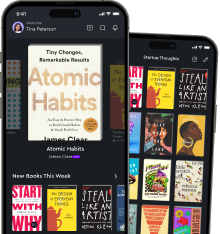Audio available in app
Use body language to reinforce your message and convey confidence from "summary" of Speak With No Fear by Mike Acker
Body language serves as a powerful tool in communication, offering unspoken cues that can significantly enhance the clarity of a message. When speaking, posture plays a crucial role. Standing tall and maintaining an open stance conveys confidence, suggesting that you believe in your message and yourself. This positive physical presence not only draws attention but also fosters trust among listeners. Gestures add dynamism to spoken words. Purposeful movements can emphasize key points, helping to illustrate ideas and engage the audience. Avoiding fidgeting or closed-off gestures, such as crossed arms, can prevent distractions and create a more inviting atmosphere. Instead, using hands to express thoughts can unify verbal and non-verbal communication, emphasizing enthusiasm and commitment to the topic. Eye contact is another vital aspect of non-verbal communication. It establishes a connection with the audience, making them feel involved and valued. Consistent eye contact signifies honesty and confidence, encouraging listeners to engage with the content being presented. Shifting gaze occasionally can also help to include different segments of the audience, ensuring that everyone feels addressed. Facial expressions should align with the message being conveyed. A genuine smile can enhance relatability, while appropriate expressions can underscore the emotions tied to the subject matter. This alignment between emotion and message reinforces the overall impact of the communication. Practicing these elements of body language allows for a more authentic delivery. As comfort grows with these practices, the ability to connect with an audience deepens. Embracing these aspects not only enhances communication but fosters a sense of assurance, leading to more effective interactions.Similar Posts

Share your own experiences to build rapport
Let's connect by sharing our personal experiences to create a bond. By opening up and sharing stories, we can build rapport and...

Practice observing body language in different contexts
To truly understand body language, one must practice observing it in various situations. This means paying attention to how peo...
Microexpressions offer glimpse into subconscious mind
Microexpressions are brief facial expressions that reveal a person's true emotions, often without their conscious awareness. Th...
Effective communication requires understanding your audience
To communicate effectively, it is essential to have a deep understanding of your audience. This means knowing who they are, wha...
Trust is built through transparent communication
Trust is a fundamental aspect of any relationship, especially in the workplace. It is the foundation upon which effective commu...
Be open to changing your mind
The key to winning any argument is to be willing to reassess your position. This means being open to changing your mind if pres...
Use communication as a tool for personal and professional growth
Communication is a powerful tool that can be used to enhance both personal and professional growth. By mastering the art of eff...
Pay attention to facial expressions, gestures, and posture
Facial expressions, gestures, and posture are crucial elements of nonverbal communication. They can provide valuable insights i...
Build trust and credibility through clear and honest communication
Establishing trust and credibility is essential in any form of communication. One of the most effective ways to achieve this is...
Embrace diversity and inclusion in your leadership
In today's dynamic and multicultural workplace, effective leadership requires a deep understanding and appreciation of diversit...

